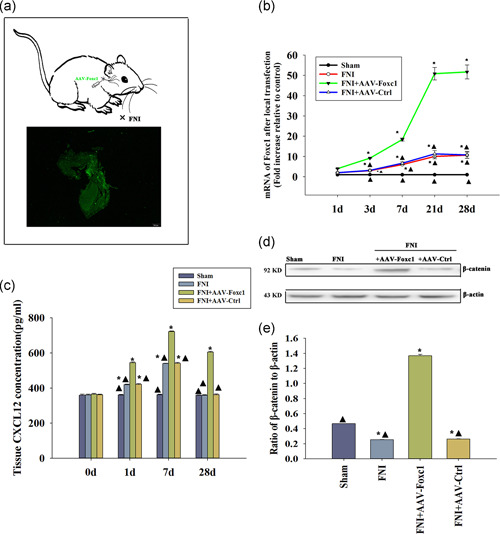Figure 5.

Inducing Foxc1 in vivo activated the CXCL12/β‐catenin signaling pathway. (a) Design of the study: SD rats received a local infection of adeno‐associated viral delivery of Foxc1.The transfection efficiency was assessed by fluorescence microscopy. (b) RT‐qPCR showed the difference of expression of Foxc1 after 1, 3, 7, 21, and 28 days of local transfection; n = 6 per group. *p < .05 versus Sham; ▴ p < .05 versus FNI+AAV‐Foxc1. (c) Tissue CXCL12 concentration in the facial nerve injury (FNI) models locally transfected with AAV‐Foxc1 or AAV‐Ctrl, FNI models, and sham animals were tested using an ELISA. n = 6 per group. *p < .05 versus Sham, ▴ p < .05 versus FNI+AAV‐Foxc1. (d,e) Tissue β‐catenin concentration in FNI models locally transfected with AAV‐Foxc1 or AAV‐Ctrl, FNI models, and sham animals were tested using western blots. n = 6 per group. *p < .05 versus sham, ▴ p < .05 versus FNI+AAV‐Foxc1. ELISA, enzyme‐linked immunosorbent assay; FNI, facial nerve injury; RT‐qPCR, real‐time quantitative polymerase chain reaction
